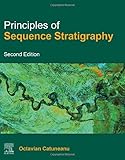Principles of sequence stratigraphy
Material type: TextLanguage: Eng Publication details: Amsterdam: Elsevier, c2022.Edition: 2nd EdDescription: viii, 486p. : ill (col). ; 26cmISBN:
TextLanguage: Eng Publication details: Amsterdam: Elsevier, c2022.Edition: 2nd EdDescription: viii, 486p. : ill (col). ; 26cmISBN: - 9780444533531
- 551.7 CAT 23rd
| Item type | Current library | Call number | Status | Date due | Barcode |
|---|---|---|---|---|---|
 Books
Books
|
Vigyanpuri Campus | 551.7 CAT (Browse shelf(Opens below)) | Available | 006182 |
Browsing Vigyanpuri Campus shelves Close shelf browser (Hides shelf browser)
Principles of Sequence Stratigraphy, Second Edition presents principles to practical workflow that guide applications in a consistent manner that is independent of model, geological setting and the types and resolution of the data available. The book explains the points of agreement and difference between the various approaches to sequence stratigraphy, while also defining the common ground that affords the standard application of the method. This enables the practitioner to avoid nomenclatural and methodological confusions and apply sequence stratigraphy. The text is richly illustrated with hundreds of full-color diagrams and examples of outcrop, borehole and seismic data.
The book's balanced approach helps students and professionals acquire a sound understanding of the concepts and methodology. It will appeal to geologists, geophysicists and engineers with interest in basin analysis, stratigraphy and sedimentology, as well as in all economic applications that concern the exploration and production of natural resources, including water, hydrocarbons, coal and sediment-hosted mineral deposits.
Updates the award-winning first edition in all aspects of sequence stratigraphy, from the underlying theory to the practical applications
Presents the standard approach to sequence stratigraphic methodology, nomenclature, and classification; the role of modeling in sequence stratigraphy, and the difference between modeling and methodology
Discusses the roles of scale and stratigraphic resolution in sequence stratigraphy, and the workflow that affords a consistent application of the method irrespective of the types of data available
Describes the three-dimensional nature of the stratigraphic architecture, and the variability of stratigraphic sequences with the tectonic setting, depositional setting, and the climatic regime
Illustrates all concepts with high-quality, full-color diagrams, outcrop photographs, and subsurface well data and seismic images
Includes coloured illustrations and index.






There are no comments on this title.